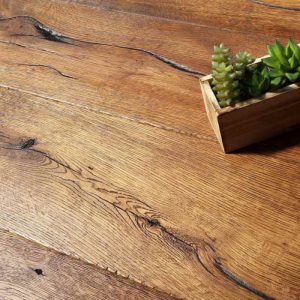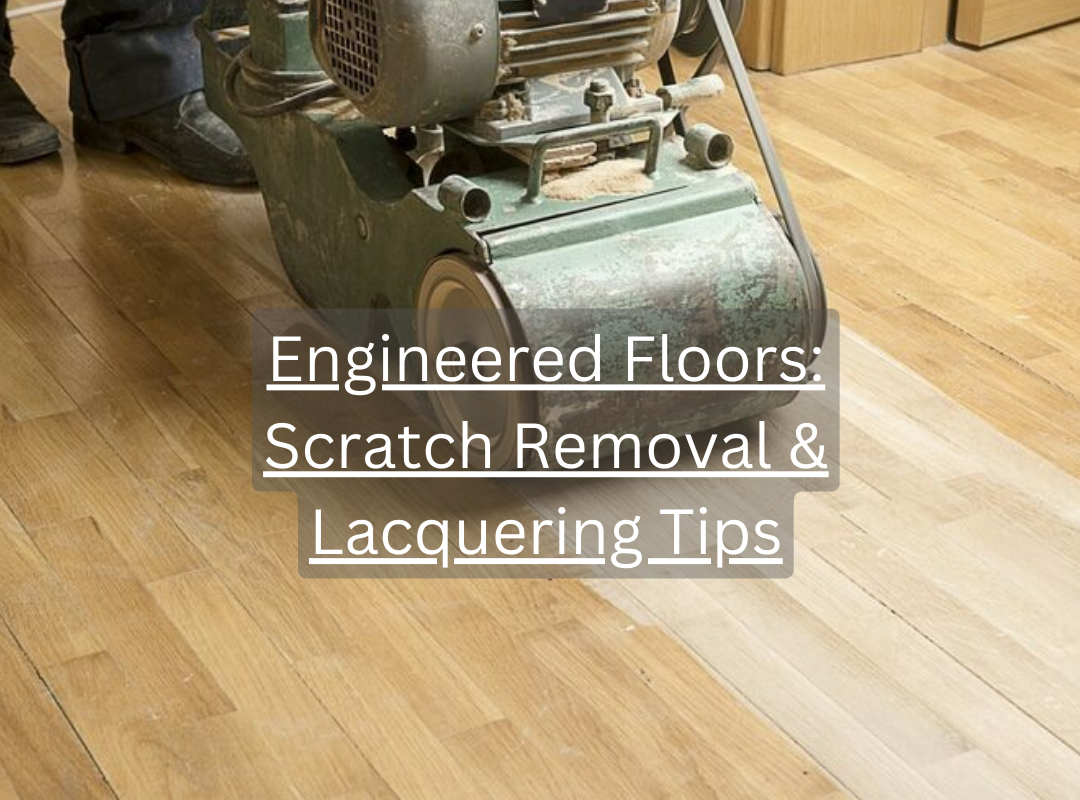18 Apr 2024
Engineered Floors: Scratch Removal & Lacquering Tips
In this blog we take a closer look on how to Revitalize Engineered Floors: Scratch Removal & Lacquering Tips by effectively removing scratches and re-lacquering them for a fresh new look.
Understanding the Importance of Scratch Removal on Engineered Floors
Scratches on engineered floors not only affect the appearance but also compromise the integrity of the flooring. It is important to remove scratches as soon as possible to prevent further damage. By addressing scratches promptly, you can maintain the longevity and beauty of your engineered floors.

Scratches can expose the underlying layers of the flooring, making it more susceptible to moisture, dirt, and stains. This can lead to discolouration, warping, and even structural damage over time. Therefore, understanding the importance of scratch removal is crucial to ensure the durability and aesthetics of your engineered floors.
Techniques for Removing Scratches from Engineered Wood Flooring
There are several techniques you can use to effectively remove scratches from engineered wood flooring without the need for sanding. Here are a few methods to consider:
1. Fillers: Use wood fillers specifically designed for engineered wood to fill in shallow scratches. Apply the filler to the scratch, following the manufacturer’s instructions, and wipe off any excess. This method helps to camouflage the scratch and restore the smooth surface of the flooring.
2. Vinegar and Olive Oil: Create a mixture of equal parts white vinegar and olive oil. Apply the mixture to a soft cloth and gently rub it onto the scratched area. The vinegar helps to clean the surface, while the oil moisturizes and hides the scratch. Wipe off any excess mixture and buff the area with a clean cloth.
3. Touch-up Pens: Touch-up pens are an easy and convenient option for minor scratches. Choose a pen that matches the colour of your flooring and apply it directly to the scratch. Use a soft cloth to blend the color and remove any excess.
These techniques can be effective in removing scratches from engineered wood flooring and restoring its original beauty. However, it is important to test any method in a small, inconspicuous area first to ensure it does not cause any damage or discoloration.
Tips for Lacquering and Sealing Engineered Floors for Longevity
After removing scratches, it is essential to apply a protective layer of lacquer or sealant to ensure the longevity of your engineered floors. Here are some tips to consider:
1. Clean the Surface: Before applying lacquer or sealant, thoroughly clean the floor to remove any dust, dirt, or residue. Use a vacuum or broom to remove loose particles, and then mop the floor with a mild cleaner. Allow the floor to dry completely before proceeding.
2. Choose the Right Product: Select a high-quality lacquer or sealant specifically designed for engineered wood flooring. Read the manufacturer’s instructions carefully and follow them closely for the best results.
3. Apply Thin Coats: Apply the lacquer or sealant in thin, even coats using a clean brush or roller. Allow each coat to dry completely before applying the next one. Multiple thin coats provide better protection and a more even finish compared to a single thick coat.
4. Sand Between Coats: For optimal results, lightly sand the surface between coats of lacquer or sealant. This helps to smooth out any imperfections and create a smooth, professional-looking finish.
By following these tips, you can effectively seal and protect your engineered floors, enhancing their longevity and maintaining their aesthetic appeal.
Choosing the Right Products for Scratch Removal and Lacquering
When it comes to scratch removal and lacquering, choosing the right products is crucial for achieving the best results. Consider the following:
1. Scratch Removal Products: Look for wood fillers or touch-up pens specifically formulated for use on engineered wood floors. Ensure that the color of the filler or pen matches the color of your flooring for seamless results.
2. Lacquer or Sealant: Opt for a high-quality lacquer or sealant that is compatible with engineered wood flooring. Read product labels and reviews to ensure that the product is durable, long-lasting, and provides the desired finish.
3. Cleaning Products: Use mild cleaners specifically designed for engineered wood floors to avoid harsh chemicals or abrasive materials that can damage the surface. Follow the manufacturer’s recommendations for cleaning and maintenance.
By investing in the right products, you can effectively remove scratches and apply a protective layer to your engineered floors, ensuring their longevity and maintaining their beauty.
Maintaining the Newly Revitalized Engineered Floors
Once you have removed scratches and re-lacquered your engineered floors, it is important to maintain them properly to prolong their revitalized look. Here are some maintenance tips:
1. Regular Cleaning: Sweep or vacuum your floors regularly to remove dirt, dust, and debris that can cause scratches or dull the finish. Use a soft-bristle broom or a vacuum cleaner with a hardwood floor attachment to avoid scratching the surface.
2. Avoid Excess Moisture: Wipe up spills immediately to prevent moisture from seeping into the wood and causing damage. Use a damp cloth or mop for regular cleaning, but ensure it is not soaking wet.
3. Protect from Furniture: Place felt pads or furniture coasters under heavy furniture to prevent scratches and indentations. Lift furniture instead of dragging it across the floor to avoid damage.
4. Use Area Rugs: Place area rugs or mats in high-traffic areas and entryways to protect the flooring from wear and tear. Ensure that the rugs have a non-slip backing to prevent accidents.
By following these maintenance tips, you can keep your newly revitalized engineered floors looking their best for years to come.
You can find all of our engineered floors on our website here.



 Quickstep
Quickstep COREtec
COREtec Egger
Egger Balterio Collection
Balterio Collection Chene Firmfit
Chene Firmfit Luvanto
Luvanto Belle Flooring
Belle Flooring Capital
Capital Luvanto Design
Luvanto Design Luvanto Click
Luvanto Click TLC Vinyl Flooring
TLC Vinyl Flooring Rhinofloor
Rhinofloor Kaindl
Kaindl Lifestyle Floors Love AQUA
Lifestyle Floors Love AQUA Polyflor
Polyflor Life Flooring
Life Flooring Capital Creation
Capital Creation LG Hausys
LG Hausys Krono Swiss
Krono Swiss Fusion Flooring
Fusion Flooring Columbus Flooring
Columbus Flooring Kersaint Cobb
Kersaint Cobb Bostik
Bostik Moduelo
Moduelo Krono Original Xonic
Krono Original Xonic Palletforce
Palletforce Meister Flooring
Meister Flooring